Split & Rotate: Vacation House
The house is located on the foot of East Vermion mountain, in a landscape characterised by natural prominences charged also with historic memories. The archaeological site of the School of Aristotle is situated nearby, along with the city of Naoussa, known for its revolutionary past, and being one of the earliest centres of industrial development and urban modernisation in the broader area of Macedonia. Responding to the spirit of the place, the general layout is austere, with clear geometric elements, industrial aesthetics and dynamic yet controllable tension.
The general layout results from the split in two unequal parts; the main residence and the childrens pavilion that are bridged with a transparent, glass passage way. The composition results from the simultaneous rotation of the volumes on two axes according to the topography and the views, thus ensuring, a dialectic composition of the entirety, with clear, relatively independently functioning yet connected parts.
The main, elongated, inclined, U-sectioned volume is rotated following the natural slope, while its slit openings and the semi-open spaces at both ends frame remarkable views of the plain of Central Macedonia and Mount Vermion. From a functional point of view, the linear arrangement of successive levels ensures unified spaces with the living room located at the lower level overlooking the main view and the higher level reserved for the private areas of the parents.
The smaller prismatic volume is also U-sectioned, rotated though by 90 ?, thus creating the childrens pavilion, open at three of its sides. The maintenance of the horizontality through its cantilevered parts, especially towards the side of the down slope, combined with a perimetric pixeled louvers filter gives the impression of lightness and hovering.
The realisation of the project was not easy. An initially larger version of concrete and wooden elements had to be abandoned due to cost and high demands in the construction. An eventual cancellation of the project led to alternative, and probably more inventive material decisions and construction solutions, revealing an unexpected flexibility of the initial concept to a series of transformations.
The unusually light, for Greek construction standards, metal framed structure and its external covering with shipping plywood, was chosen for its low cost and high speed of realisation. Actually the Split and Rotate house constitutes a reversible, pre-fab structure made of rough industrial materials that are left in their natural textures, echoing the particular industrial past of the city of Naoussa.
Avoiding any evident morphological influence, the conscious references to the local building tradition are indirect. They can be traced in the typological level, regarding the narrow-faced urban houses with interior spaces arranged in a succession, the semi-open living spaces and the light structures of the upper levels with a transparency controllable by means of perforated filters that facilitate climatic adaptation.
The vacation house in Naoussa is the result of a small series of compositional studies of splitting, graduating and rotating clear geometric prisms, adjustment to the topography and environmental adaptation to the natural and cultural landscape of the place.


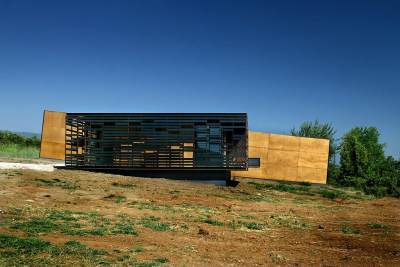
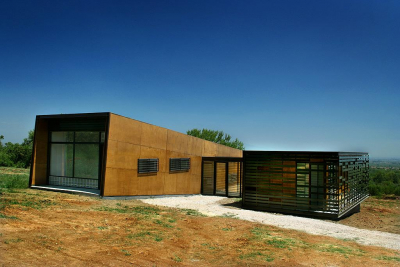

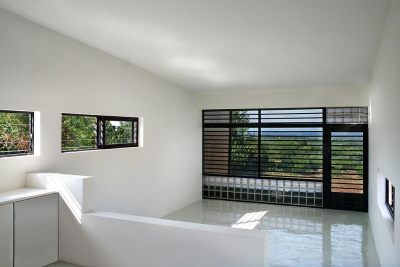

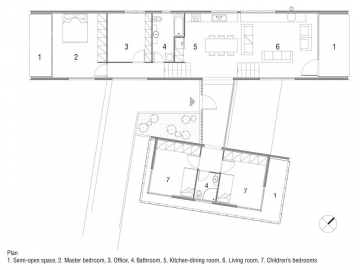
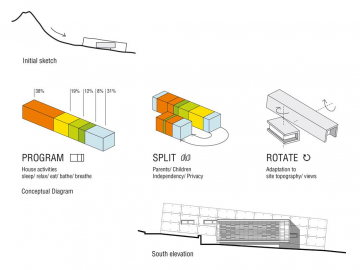
.jpg)
.jpg)